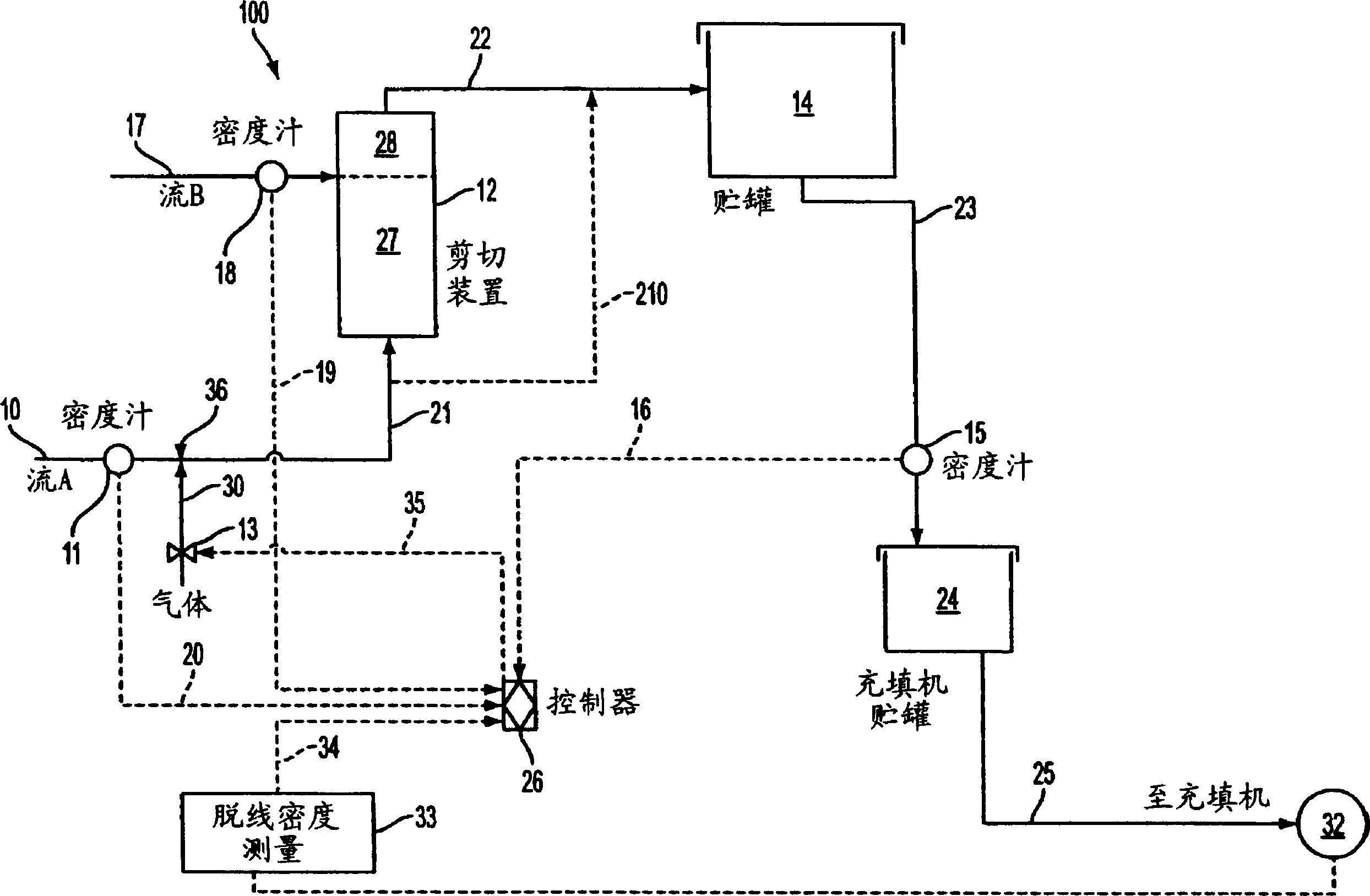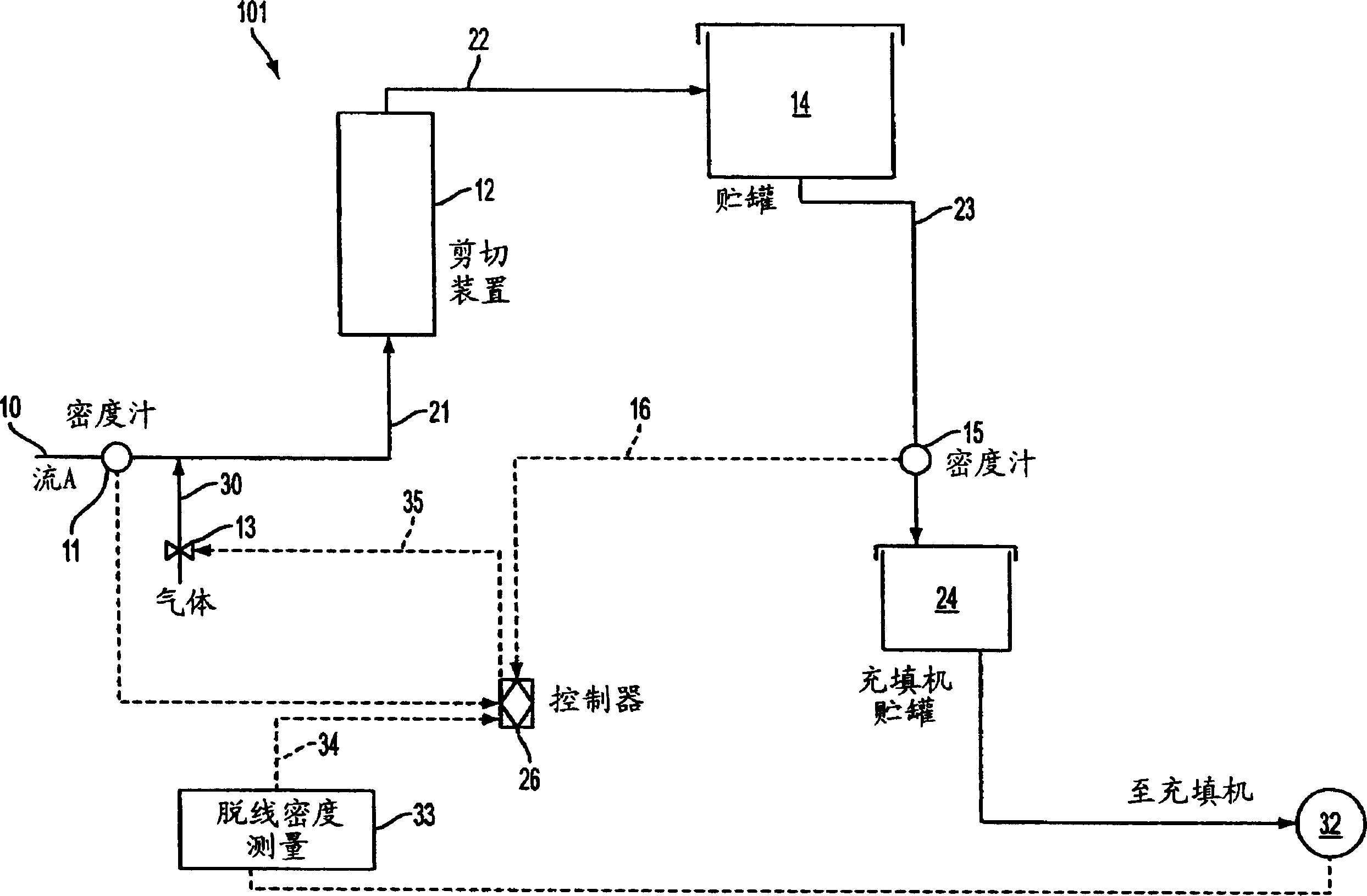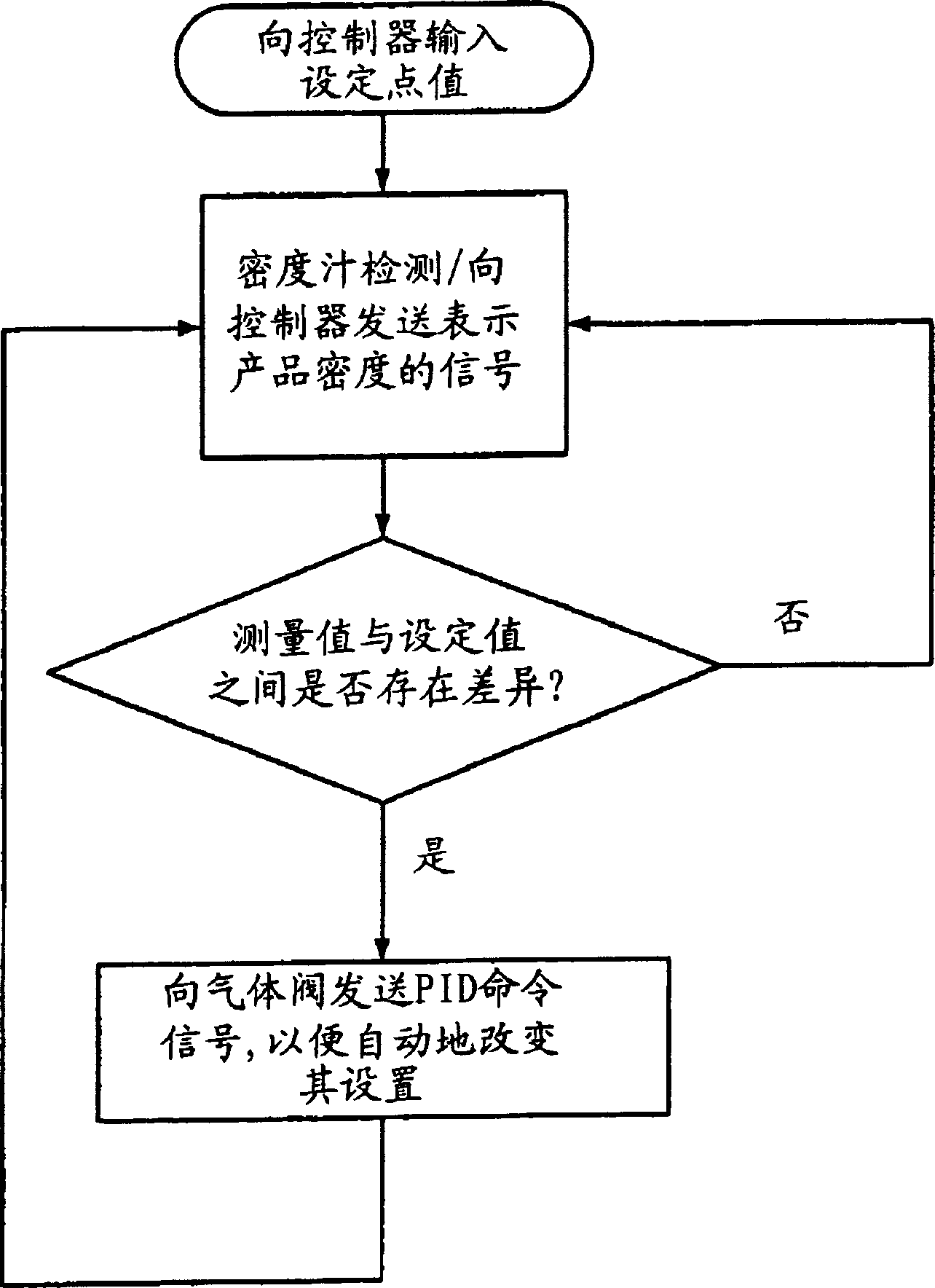Method and system for controlling product density
A product and density technology, applied in the field of controlling the final density of aerated food
- Summary
- Abstract
- Description
- Claims
- Application Information
AI Technical Summary
Problems solved by technology
Method used
Image
Examples
Embodiment 1
[0074] As an initial controlled study, as previously mentioned, it is usually done in combination with e.g. figure 1 Aerated, spoonable food products are produced in the same processing system as shown in , except that a densitometer for measuring the density of the product is placed in the conduit 22 fairly close to the outlet end of the shearing unit 12. The two-stage shearing unit used was of the type generally described in US Patent No. 5,114,732. The base emulsion premix is pumped into the shear unit 12 at a pressure of approximately 40 to 60 psg, and the emulsified product is then withdrawn from the unit 12 at an outlet pressure of approximately 20 psg. The pressurized gas is combined with the base emulsion premix before pumping the formed combination into the shear unit. A control valve is placed on the gas input line to provide control over the gas supply flow rate.
[0075] The base emulsion premix was fed to the shear unit at a rate of approximately 350-650 lbs / m...
Embodiment 2
[0079] In these experiments, the density meter was located further downstream of the shear cell, in a similar figure 1 The location shown in . The density meter is mounted on a conduit 23 which connects a 500 gallon storage tank 14 located downstream on the outlet side of the shear unit 12 and a smaller 50 gallon storage tank 24 on the inlet side of the filling machine 32 . The pipe 22 has a length of about 5 feet and a diameter of about 4 inches, and the density meter is installed immediately before the tank 24 . Pipe 23 has a diameter similar to pipe 22 . The product has an average residence time in storage tank 14 of about 5-15 minutes. The residence time in the filler tank 24 is about 1-5 minutes.
[0080] Additionally, the processing materials, equipment, and manner of recording product density measurements were similar to those described in Example 1.
[0081] In the first process run, air was treated as the gas. exist Figure 7 The result is depicted in . The obs...
Embodiment 3
[0085] Experiments were performed to investigate and compare the possible effect of the choice of aeration gas on the density retention of aerated emulsions. Study nitrogen and air in this regard. Also, the effect of the choice of aeration gas was studied in two different aerated emulsions: A) mayonnaise, and B) mayonnaise analog. The process system used to make each of the aerated emulsions studied was identical to that described in Example 2.
[0086] A) Research on mayonnaise:
[0087] The mayonnaise premix contains approximately 80% oil and 6% egg, with the remainder comprising water, sweetener, and flavoring. Combine gas (either nitrogen or air depending on the operation) with the base emulsion premix at a rate of 10-15 SCFH. The product density measured at the outlet of the shear unit and additionally at a position downstream of the first and second storage tanks is taken as the "initial product density" (see Example 1) , the product density measured at the intermedi...
PUM
 Login to View More
Login to View More Abstract
Description
Claims
Application Information
 Login to View More
Login to View More - R&D
- Intellectual Property
- Life Sciences
- Materials
- Tech Scout
- Unparalleled Data Quality
- Higher Quality Content
- 60% Fewer Hallucinations
Browse by: Latest US Patents, China's latest patents, Technical Efficacy Thesaurus, Application Domain, Technology Topic, Popular Technical Reports.
© 2025 PatSnap. All rights reserved.Legal|Privacy policy|Modern Slavery Act Transparency Statement|Sitemap|About US| Contact US: help@patsnap.com



